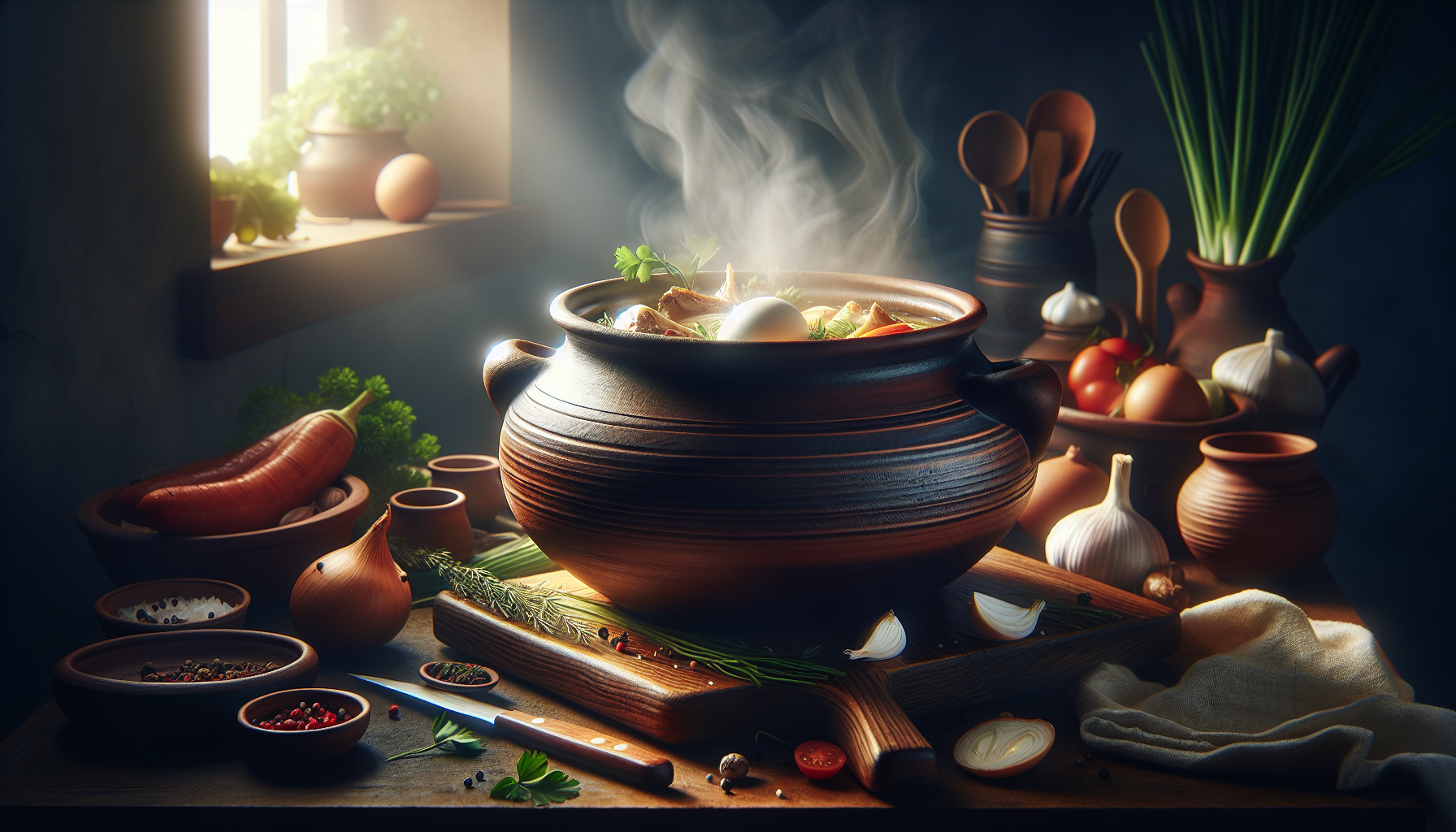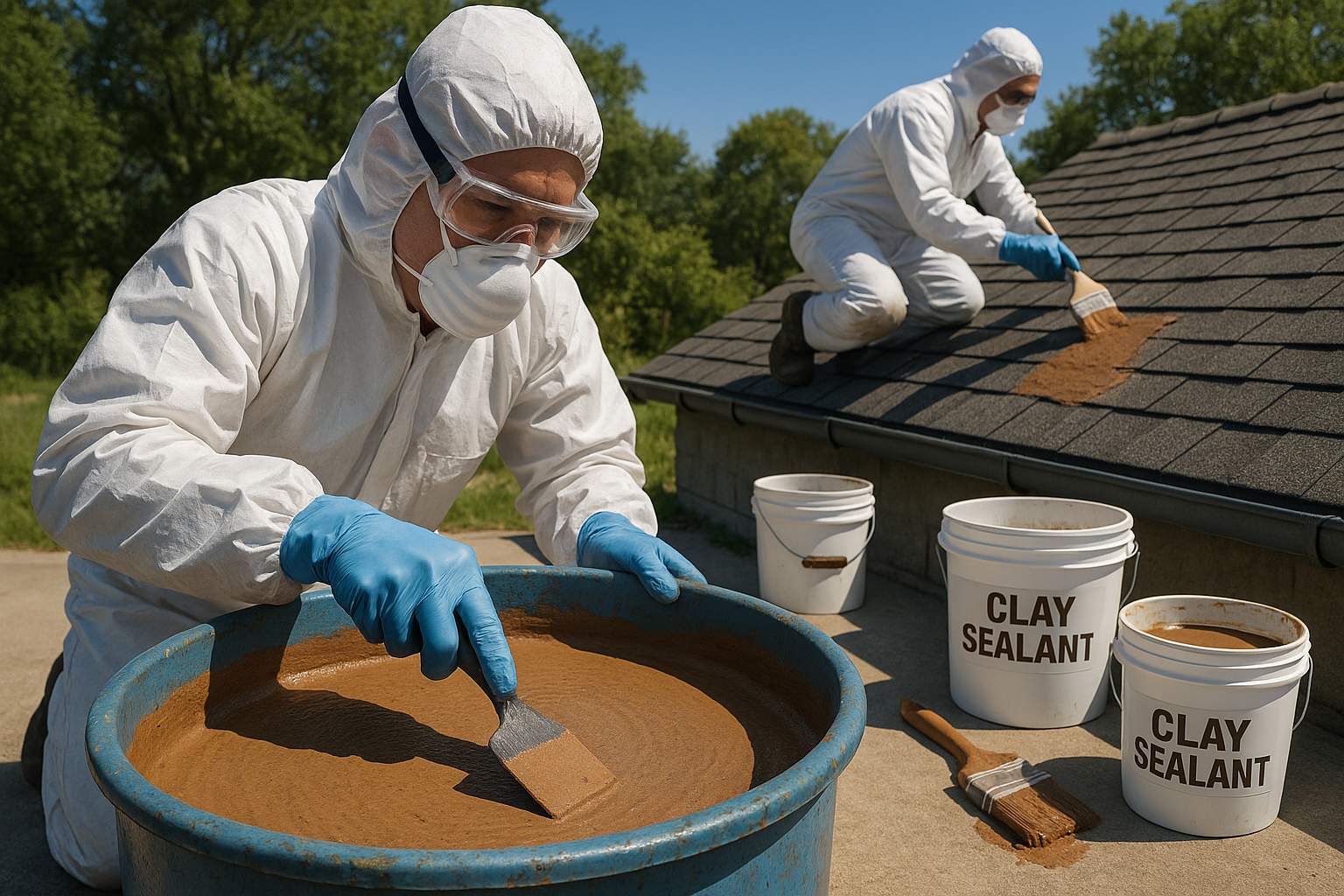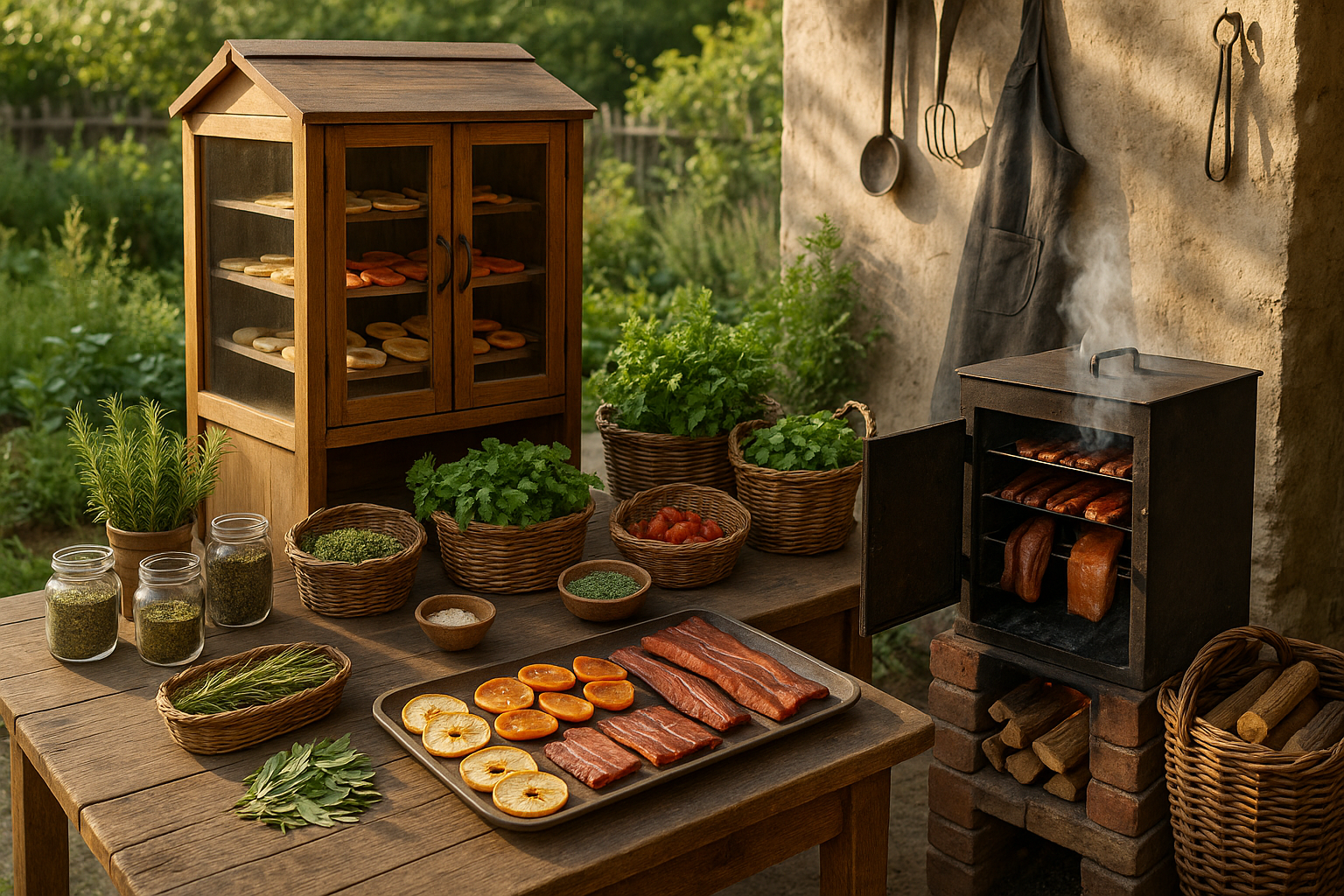In a world where culinary trends come and go, there’s something inherently comforting about returning to time-tested traditions that connect us to our roots. Imagine a cooking method that has been cherished for centuries, one that not only enhances the flavors of your food but also elevates the overall dining experience. Welcome to the enchanting world of thermal clay cooking pots—a hidden gem in the realm of culinary arts that promises to revolutionize your kitchen adventures. With a rich history and a multitude of benefits, these remarkable vessels are more than just cooking tools; they are the secret to creating delicious and healthy meals that will captivate your senses and nourish your soul. 🍲
Thermal clay cooking pots, also known as terracotta or earthenware pots, have been used by cultures around the globe for thousands of years. From the sun-drenched kitchens of the Mediterranean to the vibrant food markets of Asia, these pots have long been celebrated for their unique ability to retain heat and moisture, resulting in dishes that are both flavorful and tender. But what exactly makes these pots so special, and why are modern chefs and home cooks alike rediscovering their magic? In this article, we’ll delve into the fascinating history of thermal clay pots, exploring how their natural composition and ingenious design contribute to a superior cooking experience.
One of the most compelling reasons to embrace thermal clay pots is their unparalleled ability to produce healthy meals without compromising on taste. The porous nature of clay allows for slow, even cooking, ensuring that nutrients are preserved and flavors are intensified. Whether you’re simmering a hearty stew, baking a crusty loaf of bread, or crafting a delicate dessert, the gentle heat distribution provided by these pots guarantees a delectable result every time. Moreover, their non-toxic, eco-friendly properties make them a safe and sustainable choice for conscientious cooks looking to reduce their carbon footprint while indulging in culinary delights.
Throughout this article, we’ll explore the myriad ways in which thermal clay cooking pots can transform your culinary endeavors. From selecting the right pot for your needs and mastering essential cooking techniques, to discovering delicious recipes that highlight the versatility of these timeless tools, we’ll guide you on a journey that promises to unlock new dimensions of flavor and nutrition. So, whether you’re a seasoned chef or a curious novice, get ready to uncover the magic of thermal clay cooking pots—a secret that has stood the test of time and continues to inspire kitchens around the world. 🌍🍽️
The Ancient Art of Cooking with Thermal Clay Pots
Cooking with thermal clay pots is an ancient tradition that has been passed down through generations, capturing the essence of flavors and nutrients in every dish. These pots, often handmade, are crafted from natural clay and are known for their ability to retain heat, cook food evenly, and enhance the taste of any meal. Thermal clay pots have been used across various cultures, each adding its unique touch to the culinary art. From the tangy flavors of Indian curries to the rich stews of Moroccan cuisine, the magic of clay pots lies in their ability to elevate every dish.
One of the most notable advantages of using thermal clay pots is their thermal insulation properties. Unlike metal cookware, which can cause food to stick or burn, clay pots allow heat to be distributed evenly, ensuring that every ingredient is cooked to perfection. This even cooking prevents the loss of vital nutrients, making your meals not only delicious but also healthier. The porous nature of clay allows it to absorb moisture, which helps in slow-cooking processes, locking in flavors and aromas that tantalize the senses.
Furthermore, the aesthetic appeal of clay pots cannot be overlooked. They bring a rustic charm to your kitchen and and dining dining table, creating a unique dining experience. Many chefs and cooking enthusiasts are rediscovering the benefits of clay pot cooking, not just for the flavors it imparts but for the joy it brings to the cooking process. As you delve into the world of thermal clay pots, you will discover an array of shapes and sizes, each suited for different types of dishes. Whether you are simmering a pot of soup or baking a bread, the versatility of clay pots makes them a valuable addition to any kitchen.
Benefits of Using Thermal Clay Pots
- Heat Retention: Clay pots maintain a consistent temperature, ideal for slow-cooking.
- Flavor Enhancement: The porous nature of clay enhances the taste and aroma of the food.
- Healthier Meals: Retains nutrients and requires less oil or fat during cooking.
- Eco-Friendly: Made from natural materials, contributing to sustainable living.
- Versatile Cooking: Suitable for a wide range of dishes, from soups to baked goods.
Comparing Clay Pots with Other Cookware
When it comes to choosing cookware, the options are vast, ranging from stainless steel and non-stick to cast iron and clay. Each material has its own set of advantages and disadvantages, but thermal clay pots stand out due to their unique properties. Let’s explore how clay pots compare to other popular types of cookware.
FeatureClay PotsStainless SteelNon-StickCast IronHeat RetentionExcellentGoodFairExcellentFlavor EnhancementHighModerateLowHighHealth BenefitsHighModerateLowModerateEco-FriendlinessHighModerateLowModeratePrice RangeVariesModerate to HighModerateHigh
As depicted in the table, clay pots excel in areas like heat retention, flavor enhancement, and eco-friendliness. They offer a healthier cooking alternative compared to non-stick cookware, which often involves chemical coatings that can degrade over time. The flavor-enhancing property of clay pots, due to their porous nature, allows for a culinary experience that is both authentic and delightful. While cast iron also provides excellent heat retention, it requires regular maintenance to prevent rusting, unlike clay pots that are relatively easier to care for.
For those interested in exploring the art of clay pot cooking, the investment in a high-quality clay pot is undoubtedly worthwhile. Not only do they provide superior cooking results, but they also encourage a return to traditional, sustainable cooking methods that are kinder to the planet. As the culinary world shifts towards healthier and more eco-friendly choices, clay pots are experiencing a resurgence in popularity, both among home cooks and professional chefs.
How to Care for Your Clay Pot
- Seasoning: Before using a new clay pot, soak it in water for at least 24 hours. This helps to fill the pores with moisture, preventing cracking during cooking.
- Cleaning: Avoid using soap as it can seep into the pores of the clay. Instead, use hot water and a brush to clean the pot after use.
- Drying: Allow the pot to air dry completely before storing it to prevent mold growth.
- Storage: Store in a cool, dry place. Avoid stacking clay pots as they are fragile and can chip easily.
Exploring Culinary Traditions with Clay Pots
The versatility of clay pots makes them ideal for a wide variety of dishes, allowing you to explore different culinary traditions from around the world. Whether it’s the slow-cooked stews of North Africa or the fragrant curries of India, cooking with clay pots offers an opportunity to delve into the flavors of diverse cuisines.
In North Africa, the tagine, a conical clay pot, is used to prepare savory stews with rich spices and tender meats. The unique shape of the tagine allows condensation to drip back into the food, keeping it moist and full of flavor. Similarly, in India, clay pots, known as handi, are used to cook biryanis and curries, with the slow-cooking process allowing spices to meld beautifully with the ingredients.
Latin American cuisine also embraces the use of clay pots, particularly in the preparation of dishes like Mexican cazuelas and Brazilian feijoadas. These pots bring out the earthy flavors of beans and meats, creating a hearty and satisfying meal. In each of these traditions, the clay pot is more than just a cooking vessel; it is a symbol of heritage and cultural identity, offering a taste of history in every bite.
To experience the magic of clay pot cooking, consider trying out recipes from these regions. The slow and gentle cooking process not only preserves the integrity of the ingredients but also allows you to savor the aromas and textures that are characteristic of these time-honored dishes. As you explore these recipes, you’ll gain a deeper appreciation for the role that clay pots play in creating meals that are both nourishing and flavorful.
Watch a tutorial on using clay pots in traditional Indian cooking on YouTube: Clay Pot Cooking – Indian Recipes by Cooking with Anjali

Conclusion
In conclusion, the journey into the world of thermal clay cooking pots reveals a timeless culinary tradition that marries health and flavor in a unique and profound way. Throughout this article, we have explored the rich history of these remarkable vessels, tracing their origins back to ancient civilizations where they were revered for their ability to enhance the taste and nutritional value of food. 🌿
We delved into the science behind thermal clay pots, understanding how their natural properties facilitate even heat distribution, moisture retention, and the infusion of flavors that elevate simple ingredients into gourmet delights. From the perspective of health, these pots offer a way to cook without the need for excessive oils or fats, preserving the natural goodness of the ingredients and contributing to a healthier lifestyle.
The versatility of thermal clay cooking pots was also highlighted, demonstrating their adaptability to various cuisines and cooking methods. Whether you’re simmering a hearty stew, baking bread, or crafting a delicate dessert, these pots provide a reliable and effective means of achieving culinary excellence.
Moreover, the environmental benefits of using clay pots cannot be overstated. Their sustainable production methods and biodegradability make them an eco-friendly choice for conscientious cooks who are mindful of their environmental footprint. 🌎
As we reflect on the many advantages of incorporating thermal clay pots into our kitchens, it’s clear that they offer more than just a cooking tool; they provide a holistic approach to food preparation that honors tradition, promotes health, and respects the planet.
We invite you, dear reader, to embark on your own culinary adventure with thermal clay cooking pots. Share your experiences, experiment with new recipes, and rediscover the joy of cooking with these ancient yet innovative vessels. Feel free to leave a comment below, share this article with fellow food enthusiasts, or apply what you’ve learned to transform your daily meals into healthy and delicious creations. 🍲
Let this exploration of thermal clay cooking pots inspire you to reconnect with the simplicity and authenticity of cooking, where every meal becomes a magical experience. Thank you for joining us on this journey, and may your culinary endeavors be as delightful as they are nutritious.
(Note: As of this writing, please ensure any links provided in this article are from active and credible sources for further reading and exploration of thermal clay cooking pots.)




